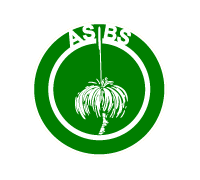
ASBS Newsletter – Book Review
Flora of New South Wales, Volume 3
edited by Gwen Harden.
(From ASBS Newsletter Number 74, March 1993)
Published by: University of NSW Press, Kensington. 1992.
717 pp. ISBN 0-86840172-2. $89.95.
This brief review should be largely a matter of preaching to the converted, as the Flora of New South Wales is shaping up as a great improvement in our understanding of the regional flora, and as a stepping stone in the direction of an adequate knowledge of plant systematics in Australia.
The volumes of the Flora of New South Wales have appeared in an amazingly short period of time since the inception of the project in 1982. This important volume runs from Balsaminaccae to Lamiaceae, and thus contains many sizable families, including Apiaceae, Asteraceae, Solanaccae, Epacridaceae, Rubiaceae, and Lamiaceae.
As is perhaps inevitable with a work of this size and detail, Volume 3 does contain a few minor shortcomings. There are a few spelling mistakes, e.g. p. xx "Nooteboon" should read "Nooteboom". There are some annoying couplets in the keys, e.g. p. 3 Polygalaccae "2 leaves always alternate ... 2* leaves alternate or occasionally...". Some of the keys are tricky, e.g. p. 198 Conyza. Unsupported relationships are indicated in the Asteraceae by the placement of Ceratogyne (p. 289), Centipeda (p. 293), Abrotanella (p. 294), Isoetopsis (p. 295), and Elachanthus (p. 296) with the Anthemidae genera (Eriocephalus to Artemisia, pp. 284-295). This is despite some clear evidence to the contrary (see Gadek et al. 1989; Bruhl & Quinn 1990, 1991; Anderberg 1991). Some of the keys are set out incorrectly, e.g. p. 419 Monotoca "2 M. scoparia" is aligned against "1* ..." but should be set against "2* ...". The statement in the glossary (p. 677) that "Kranz anatomy ... [is] found in some grasses (Poaceae) and chenopods ..." is ambiguous; Kranz anatomy also occurs in other families, e.g. in the Cyperaceae. A few of the black-and-white drawings adjacent to the text are of variable quality and usefulness; however, it is great to have every species individually illustrated.
Now for the good news. The keys generally work very well, even in the case of the large and difficult families (e.g. Asteraccae). The descriptions, together with the illustrations, work well to confirm the results of the keys. The colour photographs are generally excellent. The glossary is well-illustrated and useful, and the general quality of the volume is high. In summary, this (and its companion volumes 1 and 2) is a great tool for regional identification. It will promote a better understanding and a greater appreciation of our flora. I am looking forward with bated breath to Volume 4 dealing with the monocots.
References
Anderberg, A.A. (1991) Taxonomy and phylogeny of the tribe Gnaphalicae (Asteraccae). Opera Botanica 104: 1-195.
Bruhl, J.J. and Quinn, C.J. (1990) Cypsela anatomy in the 'Cotuleae' (Asteraceae-Anthemidae). Bot. J. Linn. Soc. 102: 37-59.
Bruhl, J.J. and Quinn, C.J. (1991) Floral morphology and a re-assessment of affinities in the 'Cotuleae' (Asteraceae). Aust. Syst. Bot. 4: 637-54.
Gadek, P.A., Bruhl, J.J. and Quinn, C.J. (1989) Exine structure in the 'Cotuleae' (Anthemidae, Asteraccae). Grana Palynologica 28: 163-78.
Reviewer: Jeremy J. Bruhl
Department of Botany and Herbarium NE
University of New England